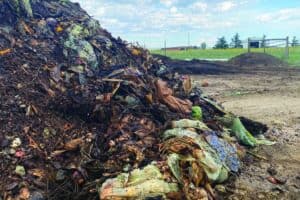It was a time to reflect on what had been lost, to appreciate what has been accomplished and to ponder what still must be done.On June 11, a crowd of 60 or so gathered for the annual Black Forest Fire Remembrance; the event was held four years to the day the fire erupted. The blaze, which was the most destructive in state history, killed two people, burned almost 500 homes and scorched more than 14,000 acres.Laura Benjamin’s home ñ- a log cabin built in 1924 and once owned by Edith Wolford, for whom Edith Wolford Elementary School is named ñ- was among those that were lost to the fire. “It was an honor to live there, and I felt like I lost a piece of history as well as losing our home,” she said.But her message to the crowd was not of loss, but of resiliency.”After we were able to go back on the property and see what was left behind, there wasn’t much,” Benjamin said, adding that even a cast iron skillet that had been on the stove was warped. But she displayed for the crowd one thing that had survived ñ- a small, ceramic house that had been sitting on the fireplace mantel.”Other than the fact that the paint has been burned off of it, it is 100 percent intact,” she said. It was formed by fire and tested by fire, just as Black Forest has been tested, she said.”We will be put through the fires of being tested again in the future, but we will survive; and we will make something positive out of it,” she said.Eddie Bracken, founder of the nonprofit Black Forest Together, warned of future tests as well.”It’s not a question of if we’re going to have another fire; we will,” he said. “The question is when. Our goal in life is to mitigate, if you will, the potential of that fire being as destructive as it was in the past.”Bracken cited some of Black Forest Together’s accomplishments: roughly 40,000 hours of volunteer time, and more than 230 work projects assisting residents in the cleanup, repair and restoration of their properties. A tree donor program in which healthy trees from mitigated properties are provided free of charge and transplanted to burned properties in need of restoration, along with another program that provides seedlings to burned properties to promote reforestation, are helping make the forest green again.But full recovery will take time, he said.”We’re looking at a 25-year program,” Bracken said. “It’s going to take that long to mitigate all the green trees in this thing, plus take care of the black trees.”Those burned, blackened trees “are a stigma on this community,î he said. ìThey’re demotivating and they’re now dangerous.”Benjamin, who moved into a new home at the site of the old one a year after the fire, said she believes the community has done “beautifully well” in coming together after the fire.It doesn’t seem like four years since the disaster, she said.”It’s gone by really, really fast. The year that we lived away from Black Forest, living in town, seemed to really drag. But once we moved into the new house, things really speeded up,î Benjamin said.Community spirit and “the fact that we’re all engaged with one another, we know each other’s names” is the chief appeal of living in Black Forest for her, she said.”I can’t imagine living anywhere else.î






